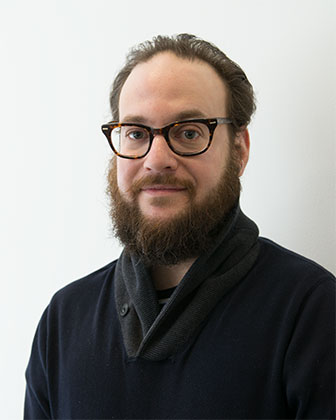Jason Lazarus Creates Public Online Reading Collection for Artists
Tuesday, April 21, 2020
Times of crisis can bring new opportunities for reflection and inquiry.
That is the perspective of USF assistant professor of photography Jason Lazarus, who in late March created Coronavirus Readings for Artists, a public resource on Google Drive for artists around the country to examine essays, excerpts, and articles relevant to the COVID-19 pandemic.
The project began after fellow USF art faculty member Wendy Babcox shared the introduction to Rebecca Solnit's “A Paradise Built in Hell: The Extraordinary Communities that Arise During Disaster” in an email to art faculty and graduate students.
“Rebecca Solnit is such a great cultural observer and philosopher,” said Lazarus. “And her book of just a few years ago, like many texts, has a newfound poignancy in this moment.”
In the excerpt, Solnit shows how altruism and solidarity emerged in the aftermath of disasters such as Hurricane Katrina and the 1989 Loma Prieta earthquake. Beneficent acts of rescue and volunteerism far outweighed acts of malevolence.
Today, we are seeing a similar outpouring of solidarity and benevolence. People coordinate the grassroots creation of protective gear such as masks and shields for medical workers, family and friends get together in virtual spaces, and creative acts of kindness and camaraderie proliferate on social media.
Seeing how this text can be rediscovered in the context of COVID-19, Lazarus began to think about how other reading materials could be reexamined.
He added the multi-page 2018 artist statement of Swiss-American artist Selina Trepp, “I Work With What I Have,” a visual guide outlining how recycling her own artistic materials is central to her artist practice.
Trepp, who hasn't brought new materials into her studio since October 2012, presents a refreshing take on art creation that goes beyond the acquisition of material, something relevant to art creators during a time when they may have less access to art supplies and resources.
“Her revelation and ideological discipline is a beautiful thing to read in a time when artists maybe think that everything has to come from Amazon.com,” said Lazarus.
Another piece Lazarus added to the folder at the recommendation of Chicago artist Lise Baller Haggesen is Joan Didion's essay, “On Keeping a Notebook,” which outlines the value of the casual yet valuable research practice of journaling. Lazarus says the simple task of journaling—typically regarded as insignificant or mundane—is made immensely powerful in the context of the current global state of affairs.
Lazarus also added a collection of writings on the theme of utopias, a collection he read with other artists during the Summer Forum artist residency in 2012.
“Notions of utopias are profound in times of crisis,” said Lazarus.
With well over 100 additional PDFs and word documents, many contributed by artists from around the country in cities such as New York and Chicago, the folder has grown to become an important resource for artists who find themselves uprooted from their typical ways making art, teaching, and learning.
Coronavirus Readings for Artists was listed as a resource in an April e-publication by Miller ICA, the contemporary art institute of Carnegie Mellon University.
Lazarus has brought some of the readings, such as the excerpt from Solnit's book, to the students in his now online photography classes. He feels it is his responsibility to bring these types of relevant philosophical and political science texts to his students. He hopes to inspire students to find new areas of artistic inquiry.
“Part of our job as faculty is to get [students] to think of art production as sort of like a tripod,” said Lazarus. “It's making and reading and writing, and it's reading and writing that allow more reflective and critical modes of understanding that—in tandem with object-making—are really what make an art program strong.”
Visit Lazarus's website for more on Coronavirus Readings for Artists.
Jason Lazarus is an artist exploring vision and visibility. His work includes a range of fluid methodologies: original, found and appropriated images, text-as-image, animated GIFs, photo-derived sculptures, pigment-inks-as-image, live archives, and public submission repositories among others. This expanded photographic practice seeks new approaches of inquiry, embodiment, and bearing witness.